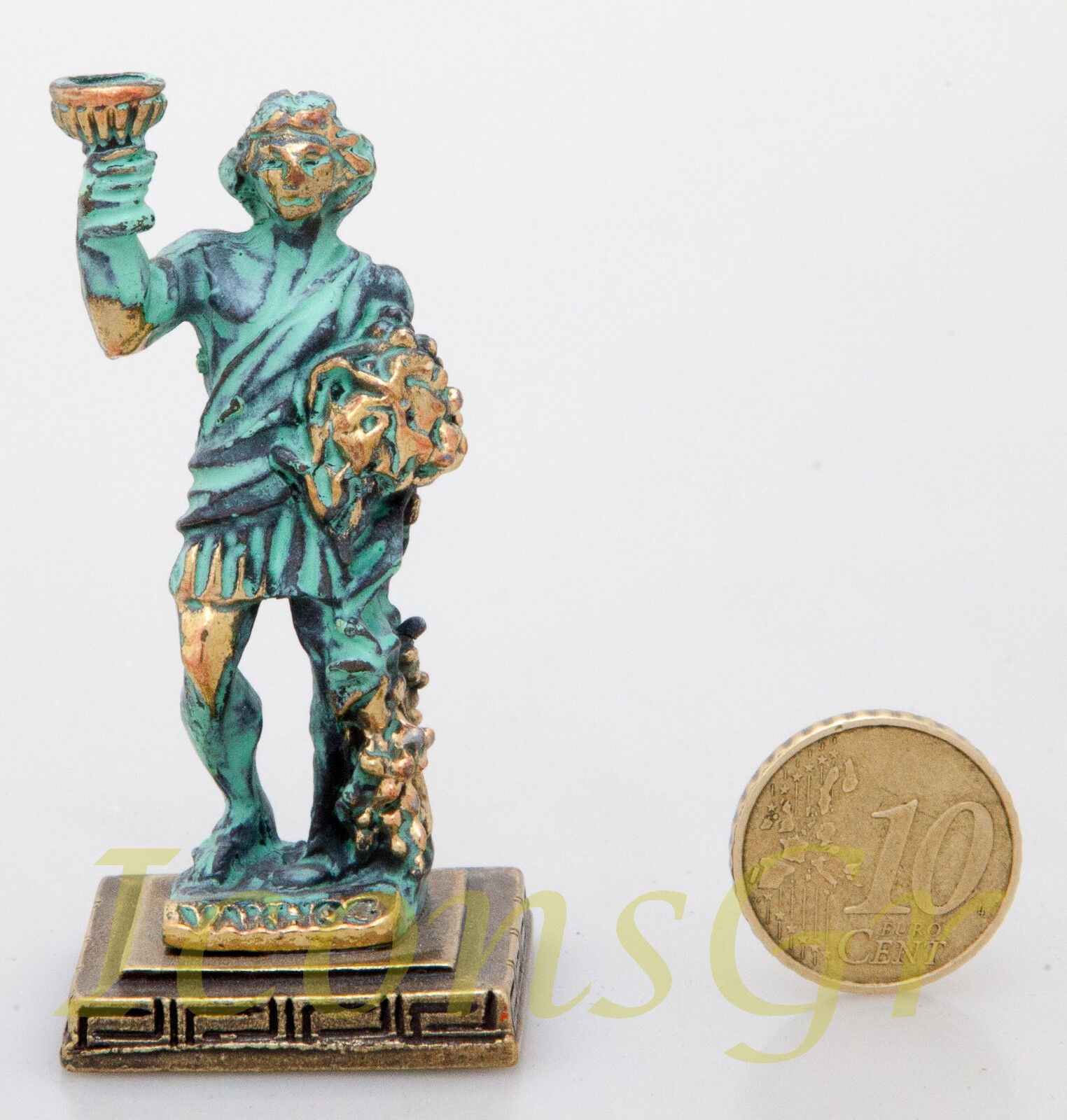ANCIENT GREEK ZAMAC MINIATURE STATUE OF VACHOS (GREEN/GOLD)

When you click on links to various merchants on this site and make a purchase, this can result in this site earning a commission. Affiliate programs and affiliations include, but are not limited to, the eBay Partner Network.
ANCIENT GREEK ZAMAC MINIATURE STATUE OF VACHOS (GREEN/GOLD):
$12.90
Miniature Statue Of Vachos
Dimensions: 6x3,5cm or 2.4x1.4 in
Weight: 75grMaterial: ZAMAC
Color: GREEN/GOLD OXIDIGATION
Description:
Dionysus /daɪ.əˈnaɪsəs/ (Ancient Greek: Διόνυσος, Dionysos) was the god of the grape harvest, winemaking and wine, of ritual madness and ecstasy in Greek mythology. His name in Linear B tablets shows he was worshipped c. 1500–1100 BC by Mycenean Greeks: other traces of Dionysian-type cult have been found in ancient Minoan Crete.His origins are uncertain, and his cults took many forms; some are described by ancient sources as Thracian, others as Greek.In some cults, he arrives from the east, as an Asiatic foreigner; in others, from Ethiopia in the South. He is a god of epiphany, \"the god that comes\", and his \"foreignness\" as an arriving outsider-god may be inherent and essential to his cults. He is a major, popular figure of Greek mythology and religion, and is included in some lists of the twelve Olympians. Dionysus was the last god to be accepted into Mt. Olympus. He was the youngest and the only one to have a mortal mother.His festivals were the driving force behind the development of Greek theatre. He is an example of a dying god.The earliest cult images of Dionysus show a mature male, bearded and robed. He holds a fennel staff, tipped with a pine-cone and known as a thyrsus. Later images show him as a beardless, sensuous, naked or half-naked androgynous youth: the literature describes him as womanly or \"man-womanish\".In its fully developed form, his central cult imagery shows his triumphant, disorderly arrival or return, as if from some place beyond the borders of the known and civilized. His procession (thiasus) is made up of wild female followers (maenads) and bearded satyrs with erect penises. Some are armed with the thyrsus, some dance or play music. The god himself is drawn in a chariot, usually by exotic beasts such as lions or tigers, and is sometimes attended by a bearded, drunken Silenus. This procession is presumed to be the cult model for the human followers of his Dionysian Mysteries. In his Thracian mysteries, he wears the bassaris or fox-skin, symbolizing a new life. Dionysus is represented by city religions as the protector of those who do not belong to conventional society and thus symbolizes everything which is chaotic, dangerous and unexpected, everything which escapes human reason and which can only be attributed to the unforeseeable action of the gods.He was also known as Bacchus (/ˈbækəs/ or /ˈbɑːkəs/; Greek: Βάκχος, Bakkhos), the name adopted by the Romans and the frenzy he induces, bakkheia. His thyrsus is sometimes wound with ivy and dripping with honey. It is a beneficent wand but also a weapon, and can be used to destroy those who oppose his cult and the freedoms he represents. He is also called Eleutherios (\"the liberator\"), whose wine, music and ecstatic dance frees his followers from self-conscious fear and care, and subverts the oppressive restraints of the powerful. Those who partake of his mysteries are possessed and empowered by the god himself.His cult is also a \"cult of the souls\"; his maenads feed the dead through blood-offerings, and he acts as a divine communicant between the living and the dead.In Greek mythology, he is presented as a son of Zeus and the mortal Semele, thus semi-divine or heroic: and as son of Zeus and Persephone or Demeter, thus both fully divine, part-chthonic and possibly identical with Iacchus of the Eleusinian Mysteries. Some scholars believe that Dionysus is a syncretism of a local Greek nature deity and a more powerful god from Thrace or Phrygia such as Sabazios[14] or Zalmoxis.
Handlingtime may take up to 10 days because the item is made after it is purchased.
Shape andsize may vary up to 0,5 cm because it is a handmade product.
Shippingtakes from 7 (European countries) to 25 working days (rest of the world) .
Please understand thatthe above is only the estimated delivery time, it may delay due to strikeactions, severe weather, custom reasons or peak seasons, such as Christmas /New Year Holidays.
Importtaxes and other charges are not included in the item price or shipping cost.Please check with your country\'s customs office to determine what or if thereare additional costs prior to your purchase.
ANCIENT GREEK ZAMAC MINIATURE STATUE OF VACHOS (GREEN/GOLD):
$12.90
